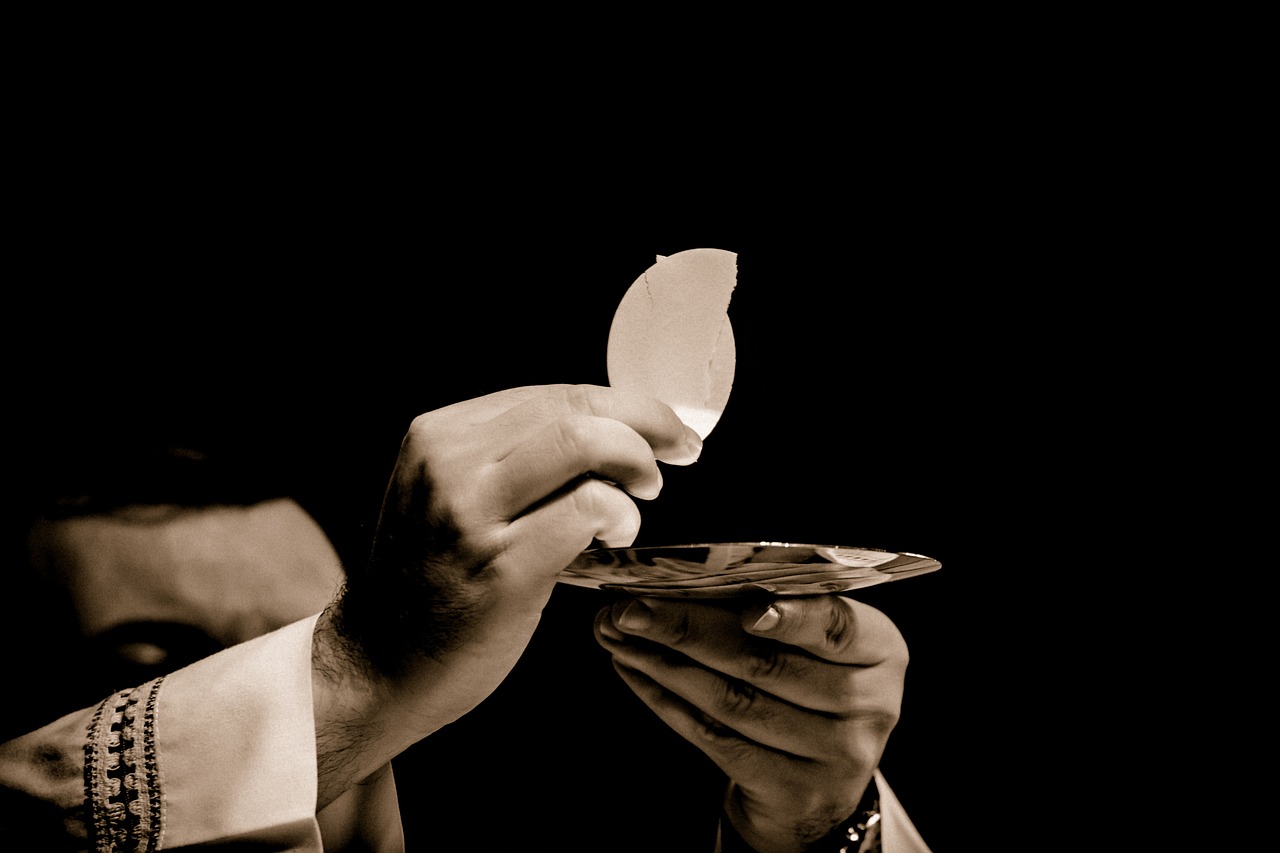Answered by Legionary of Christ Father Edward McNamara, professor of liturgy and dean of theology at the Regina Apostolorum university.
Q: I am updating our liturgical minister guidelines and have run into a question regarding our extraordinary ministers of Holy Communion: When they approach the sanctuary after the priest’s communion, do they make a bow toward the altar, or a genuflection (as the Blessed Sacrament is now present on the altar), before they enter the sanctuary? — J.H., Colbert, Washington
A: The General Instruction of the Roman Missal (GIRM) says:
“162. In the distribution of Communion, the Priest may be assisted by other Priests who happen to be present. If such Priests are not present and there is a truly large number of communicants, the Priest may call upon extraordinary ministers to assist him, that is, duly instituted acolytes or even other faithful who have been duly deputed for this purpose. In case of necessity, the Priest may depute suitable faithful for this single occasion.
«These ministers should not approach the altar before the Priest has received Communion, and they are always to receive from the hands of the Priest Celebrant the vessel containing the species of the Most Holy Eucharist for distribution to the faithful.”
The instruction Redemptionis Sacramentum states:
“88. The faithful should normally receive sacramental Communion of the Eucharist during Mass itself, at the moment laid down by the rite of celebration, that is to say, just after the Priest celebrant’s Communion. It is the Priest celebrant’s responsibility to minister Communion, perhaps assisted by other Priests or Deacons; and he should not resume the Mass until after the Communion of the faithful is concluded. Only when there is a necessity may extraordinary ministers assist the Priest celebrant in accordance with the norm of law.”
Both of these documents are silent on the gesture used by extraordinary ministers before approaching the altar. There are, however, some indications which might help us with regard to the gesture of genuflection or bows. The GIRM indicates:
“274. A genuflection, made by bending the right knee to the ground, signifies adoration, and therefore it is reserved for the Most Blessed Sacrament, as well as for the Holy Cross from the solemn adoration during the liturgical celebration on Good Friday until the beginning of the Easter Vigil.
“During Mass, three genuflections are made by the Priest Celebrant: namely, after the elevation of the host, after the elevation of the chalice, and before Communion. Certain specific features to be observed in a concelebrated Mass are noted in their proper place (cf. nos. 210-251).
“If, however, the tabernacle with the Most Blessed Sacrament is situated in the sanctuary, the Priest, the Deacon, and the other ministers genuflect when they approach the altar and when they depart from it, but not during the celebration of Mass itself.
“Otherwise, all who pass before the Most Blessed Sacrament genuflect, unless they are moving in procession. Ministers carrying the processional cross or candles bow their heads instead of genuflecting.”
The following norm will suffice for the general practice for concelebrating priests although the missal contemplates several variations:
“242. Once the prayer for Communion has been said, the principal celebrant genuflects and steps back a little. Then one after another the concelebrants come to the middle of the altar, genuflect, and reverently take the Body of Christ from the altar. Then holding it in their right hand, with the left hand placed underneath, they return to their places. However, the concelebrants may remain in their places and take the Body of Christ from the paten held for them by the principal celebrant or held by one or more of the concelebrants passing in front of them, or they may do so by handing the paten one to another, and so to the last of them.»
It is also general practice for the thurifer, boat bearer and torchbearers to genuflect to the Eucharist upon the altar before retiring during solemn Mass after the doxology at the end of the Eucharistic Prayer.
The above norms give us some hints, but they do not give us any definitive answer to our reader’s question.
Personally, I think that the general silence of the liturgical books on this topic would suggest that nothing should be done that would draw undue attention to this moment of extraordinary ministers approaching the altar by converting it into a special ceremony.
With this in mind, I would say that since, in most cases, the extraordinary ministers will first receive Holy communion from the priest and afterward receive the sacred vessels, then they should make whatever gesture is common in the region before receiving Communion but make no special gesture on receiving the sacred vessel.
However, if it happens that extraordinary ministers receive the sacred vessels before they take Communion, then a genuflection could be an appropriate gesture made before or just after they enter the sanctuary, but they should not genuflect near the altar as would concelebrants.
Likewise, if there are numerous extraordinary ministers, or they are already in the sanctuary area during Mass, then I suggest that the least complicated solution should be adopted.
* * *
Readers may send questions to zenit.liturgy@gmail.com. Please put the word «Liturgy» in the subject field. The text should include your initials, your city, and your state, province or country. Father McNamara can only answer a small selection of the great number of questions that arrive.



